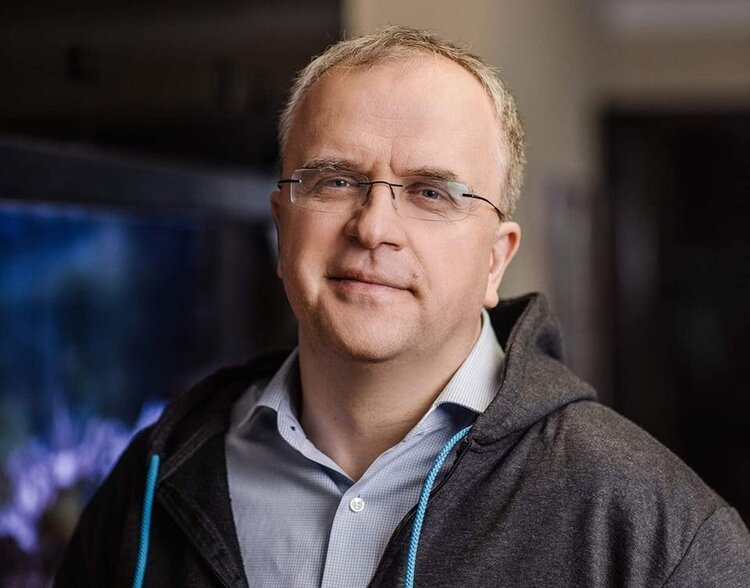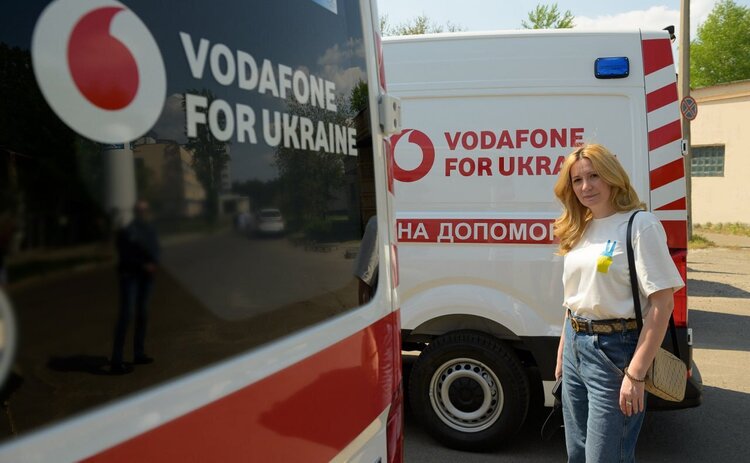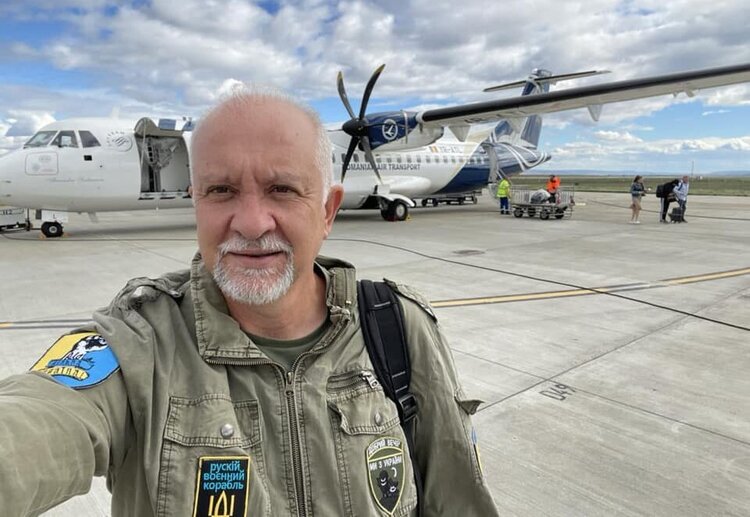
The year of unbreakable strength: Survival cases of mobile communication from Kyivstar, Vodafone Ukraine and lifecell
How the industry managed not to collapse during a year of missile attacks and work in bomb shelters
A year has passed since russia's full-scale invasion of Ukraine. The campaign, which started at 4 a.m. on February 24, 2022, and was supposed to last "three days," is still far from over. Although its outcome is clear in advance and the defeat of the aggressor is undisputed, Ukraine will emerge from this war with enormous losses.
Any estimates at this stage are preliminary. The figures can be updated several times a day depending on the intensity of air raids and bombing. Nevertheless, a year is a period for which it is customary to summarise, albeit interim, results.
Mind continues the Year of Unbreakable Strength project to analyse the impact of war of aggression on various sectors of the national economy. This time, we're focusing on how mobile operators withstood this war year.
Communication was the first thing that russian terrorists tried to "put down" throughout Ukraine a few days before the full-scale invasion. However, they have failed so far. "The Big Three are investing billions of hryvnias in restoring destroyed cell towers, stolen equipment in the liberated territories, and buying generators and more powerful batteries to withstand blackouts.
The operators managed to avoid massive layoffs: Kyivstar, Vodafone Ukraine, and lifecell still have about 8,000 employees. However, "repair team engineers" are among the top most dangerous specialists of the year. Earlier, Mind reported about the "adventures" they have to face in restoring communication in the frontline areas.
However, the number of subscribers has decreased due to the war. In the first nine months of last year, Kyivstar's number dropped by 7% to 24.4 million, Vodafone Ukraine's by 16.8% to 15.8 million, and lifecell's by 7.9% to 8.2 million. The operators have not yet released their full-year 2022 reports. Earlier, Kyivstar predicted that by the end of the year, the industry could lose about 12%, or 7 million customers. However, the decline could have been much greater if domestic players had not agreed with their foreign counterparts on affordable roaming rates for Ukrainians.
The decline in customers has hit the revenue dynamics of companies. While in recent years, before the full-scale invasion, operators' revenues grew by 14-25%, in 2022 they began to slow down. In the first nine months of last year, Kyivstar's total operating income from mobile communications increased by 8.3% to UAH 21.354 billion, while lifecell's increased by 12% to UAH 6.8 billion. Vodafone Ukraine recorded a 1% drop to UAH 14.72 billion. The "downward trend" will continue in the annual reports, the players say unofficially.
The profitability of the business against the war is still quite high. Kyivstar's EBITDA margin fell by 7.3 percentage points to 60.3% in the first nine months of the year, while lifecell's increased by 1.4 percentage points to 57.9%. Vodafone Ukraine's OIBDA margin increased by 1.4 percentage points to 56.9%.
So what allowed the industry to survive? What management decisions helped to keep teams and businesses together and prevent the rapid decline in subscribers and revenues? What technological and innovative solutions had to be implemented despite everything (or vice versa – owing to the war)? Mind asked the Big Three tops to share their insights.
Oleksandr Komarov,
President of Kyivstar:

We started preparing our network to work in the event of possible hostilities in November 2021. The company's business analysts created various scenarios. Based on them, we prepared "maps" of priority actions. We took into account the fact that the company's services were concentrated in several cities with a population of over a million people, which could become the primary targets of the aggressor in the event of hostilities.
So the IT, together with the product engineering, started backing up key services in western Ukraine. The plan included many different technological, organisational, procurement, logistics, administrative, and other measures. All of them depended on the conditions of implementation, availability of equipment, and the involvement of specialists in various other projects. Starting in January 2022, we reserved additional communication channels, backed up information databases, and moved critical equipment and warehouses to safer regions.
We managed to build a backup Network and Service Management Centre in one of Ukraine's cities and reserve node cell sites (CS) in safe regions that route traffic throughout Ukraine. This stage was implemented in record time – less than six months – which helped reduce the risks of infrastructure disruption during a full-scale russian invasion and, as a result, preserve business and connectivity for our subscribers.
Another unprecedented project in terms of logical complexity was the relocation of our warehouses from cities in the south and east of Ukraine to the western regions. In record time, we hired 29 trucks, transported more than 1000 pallets, and set up six warehouses in new cities.
Another experience was the launch of national roaming in record time together with colleagues in the market. In peacetime, Kyivstar's IT and product engineering team estimated that the technical part of such a project would take at least six months to complete. However, in wartime, this capability was needed "against the clock". Due to the disproportionate number of subscribers and the different stability of the networks, the project was a rather risky step. That's because the overload of Kyivstar's network could have led to a disaster instead of help, which happens when the largest network in the country loses its functionality. Therefore, all decisions on the project implementation were considered very carefully.
By pooling the efforts of the regulator and technical and IT specialists from all mobile operators, the team managed to launch national telephony with other operators' networks in 10 days – from February 26, when the idea of launching it first appeared, to March 7. Everything was done in parallel in the project: testing, setting up billing systems, call routing, mutual settlements, and safeguards to ensure network stability. Colleagues worked almost around the clock, combining work and moving to safer locations. Today, 300,000–400,000 subscribers of other mobile operators use national roaming on Kyivstar's network every day. And during massive shelling, the number of registrations reaches a million
Another important project is the organisation of safe work for employees. At the beginning of russia's full-scale invasion, more than 80% of our employees worked from home. However, we were preparing for the fact that people would have to leave dangerous places urgently. That is why we organised IDP reception centres in seven Kyivstar offices in western Ukraine. They were equipped with places for sleeping, eating, hygiene procedures, work, and recreation. During the war, the offices became a new home for more than 1000 people – employees and their families with children. In 2022, we invested hundreds of millions of hryvnias to support our staff.
We took into account almost everything... But we did not realise that russia would systematically destroy the energy infrastructure, which is the basis for water supply, medical treatment, heating, food production, and communications – primarily for the civilian population. If we were to go back to February 2022, we would have purchased more generators and stockpiled more diesel fuel.
Now we are solving these problems on an urgent basis. Before the war, we provided all critical parts of the telecom network with power from stationary generators. In 2022, we increased the number of our generator fleet by more than 70% and continue to buy new ones. But there are still not enough of them. Unfortunately, it is technically impossible to connect all the cell sites to the generators. Kyivstar has about 13,500 industrial sites. Some of the cell towers do not have the technical capabilities to connect generators, as they are located on the roofs of high-rise buildings, bridges or power poles. Therefore, another solution was found: installing rechargeable batteries with a long operating time at the base stations. More than 18,000 batteries of the new type have already been installed, and the process will continue. The replacement has already allowed us to improve the situation with mobile communications and the Internet during blackouts.
The enemy will not manage to destroy Ukraine's communications.
Olga Ustinova,
CEO of Vodafone Ukraine:

"The war has accelerated our work a lot. This applies to both the speed of decision-making and the speed of response to challenges. Ukraine is becoming a kind of experimental ground for applying various technological solutions. On the one hand, there is a negative context here – the conditions in which we have to live and survive are too harsh and tragic. On the other hand, we don't have time to hesitate and fear experiments – we can't do worse.
In this configuration of conditions, breakthrough ideas are born. Moreover, Ukraine has an extremely high innovation potential thanks, first of all, to our people – highly professional specialists. So here are some of these emergency solutions and innovations.
National roaming. This is not a new service. But in our case, the timing of its implementation was unprecedented. National roaming in Ukraine was launched in less than two weeks. From a technical point of view, setting up a clear interaction between operators and switching millions of subscribers between networks is a rather complicated process that requires time, testing, checking the correctness of connections, and providing additional network capacity, as there is an additional load due to servicing more subscribers. Usually, in peaceful conditions, this process takes six months or more.
Euro roaming. It has turned from a declaration into real plans. Joining the Euro roaming zone by a non-EU country is a precedent for both Ukraine and Europe. This will be the first time in history. The war made it possible. The first step was our cooperation with European operators. We managed to agree with them on special terms for our subscribers, so that millions of Ukrainians who were forced to flee the war to Europe could use communications abroad at Ukrainian rates. Both the process and its timing are unprecedented.
Any integration into international agreements is a complex and lengthy process involving technical, legal, and financial preparations. For example, the idea of Euro roaming first appeared in the European Union in 2007, and preparations for its launch lasted more than three years. And it was launched only in 2017. In the case of Ukraine, it will be much faster.
Read more about the novelties of the latest Joint Statement on affordable roaming for Ukrainians and the terms of joining Roam Like At Home in the interview with the regulator.
Starlink. When the optics cannot be repaired quickly, we launch mobile traffic via Starlink satellites. It was our engineers who developed mobile units with Starlink equipment. They can be quickly transported and used as a temporary solution while repairs are underway. By the way, experts from Japan were also interested in the solution. We tested this idea back in the first months of the war to restore communication in Irpin, Bucha and other de-occupied cities. Now we have a very fast way to restore the network in an emergency. This way, coverage can be deployed in a few hours. We shared this solution with other operators. They also began to actively use it.
In peacetime, we plan to apply this experience as a permanent solution for rapid deployment of coverage in remote and sparsely populated areas and along roads. This is an innovation that is not available anywhere else in the world. At the end of last year, one of the Japanese operators tested satellite technologies for emergency communication restoration, but did not implement this solution. And we did.
Emergency repair work. In peacetime, emergency repairs accounted for 2% of our regular work. Now they account for more than 95%. In 2022, our engineers made more than 1500 emergency visits. In 550 settlements, they actually rebuilt the grid. Over 2600 km of optics have been restored.
Overcoming blackouts. Blackouts were another challenge. All equipment, except fibre optics, requires power supply, and its absence is critical for the network operation. That's why we take various measures to ensure communication despite prolonged power outages. The base stations are equipped with backup batteries.
We also use any alternative power sources, from diesel generators to solar panels. But unlike batteries, such equipment is not available everywhere, but only at critical hub facilities and directions. Wherever possible, we cooperate with other businesses: shopping centres and enterprises. We connect to their stationary generators. We purchase additional equipment, diesel generators, and new batteries.
Ismet Yazıcı,
CEO of lifecell:

In the first days of the war, when we started losing connection with some cell towers, we decided to transfer our frequencies to other operators whose stations were not destroyed so that as many Ukrainians as possible could have communication from Ukrainian operators.
Then we came up with the idea of national roaming. We approached government agencies and other operators with a proposal. I believe this idea was the most successful decision we could make to help Ukrainians stay connected during the war. After all, national roaming makes it possible to get in touch when there is a signal from at least one operator in a particular area.
In March 2023, we will have provided this service for a year. Every day, an average of 300,000-400,000 subscribers of other operators use our network to stay connected. Currently, national roaming is available for voice calls and 2G/3G. We hope that later we will be able to reach an agreement with the government and other operators to launch 4G in national roaming.
What technological solutions would have been unlikely to be implemented if not for the war? We are constantly innovating, but the full-scale war has accelerated us in some areas. We have become more responsive to the challenges of today. After all, mobile communication during the war is not just about calls and messages, but also about coordination, assistance, evacuation from dangerous places and saving lives.
Remote services for subscribers. During the war, the development of our remote services accelerated significantly: the process of number portability, online registration via Diya and eSIM issuance via monobank. These solutions help subscribers to register their number, get an eSIM and switch to lifecell anywhere without having to visit the operator's stores.
All this is about convenience, speed and security for people during the war. These are the steps towards digitalization that we could have taken even without the war, but the armed aggression of the russian federation has significantly accelerated the process. In some months, the demand for eSIMs increased four to five times compared to the pre-war period. The electronic SIM card became a lifesaving service for Ukrainians in occupied Kherson in March, and its popularity has also increased during power outages in recent months.
Emergency alerts using Cell Broadcast technology. The State Emergency Service and mobile operators have tested a unified system for alerting the public about emergencies, evacuations and military threats.
Cell Broadcast technology allows you to send messages to mobile devices in a specific geographic area. Such messages are sent via the mobile network to all compatible mobile devices in the specified region. This service was discussed even before the war, but during the aggression, the project received an additional impetus.
Solar panels. During the war, we began testing a pilot project to install solar panels to power cell sites in areas where access to the power grid may be limited. If the test period is successful, we will be able to consider this solution as an alternative power supply option for equipment during power outages.
Starlink. The full-scale war in Ukraine and significant damage to the operators' infrastructure prompted us to use satellite technologies to quickly restore communications. First of all, we restored coverage in the de-occupied territories of Kyiv, Chernigiv, Kharkiv, Mykolaiv and Kherson oblasts, where our infrastructure was severely damaged.
Roaming. This year, thanks to the support of European operators, we managed to extend the term of the Gigabytes without Borders campaign, which is available in 32 countries. Thus, subscribers abroad continue to use mobile Internet as if they were in Ukraine. Before the war, it was hard to imagine that Ukrainian roaming could be so affordable.
The war has also accelerated the migration of internal services to the cloud, and encouraged us to launch a charity NFT marketplace to support both Ukraine in its fight against the russian aggressor and artists. Together with our partner WhiteBit, we have made a technological integration that combined blockchain ecosystems with communication services and allowed us to conduct crypto transactions even when the Internet is not available.
If you have read this article to the end, we hope that means it was useful for you.
We work to ensure that our journalistic and analytical work is of high quality, and we strive to perform it as competently as possible. This also requires financial independence. Support us for only UAH 196 per month.
Become a Mind subscriber for just USD 5 per month and support the development of independent business journalism!
You can unsubscribe at any time in your LIQPAY account or by sending us an email: [email protected]